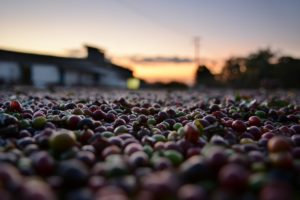The Coffee Crisis: Mitigation and Innovation
Everybody loves coffee. At least, that’s how it seems. Nearly 83% of adults in the United States drink coffee, according to a National Coffee Association survey. Because of this demand, coffee bean production has become a staple of many countries’ economies. In Honduras alone, the coffee sector is one of the region’s largest rural employers, with more than 96,000 local coffee producers and a million workers. However, the growers and retailers are still struggling to meet demand and have brought in some of the worst harvests Central America has seen in years. Amid high temperatures and inconsistent rain patterns, the Arabica coffee bean is more susceptible to disease, infestation, and abandonment than ever. With their plants plagued by leaf rust fungus and Antestia stinkbugs (which, combined, roughly costs $750 million in annual damages), farmers from Central America are relinquishing their livelihoods to find work elsewhere.

These issues present serious problems, not only for the resilience of coffee farming communities, but for the existence of the coffee industry itself. By 2050, it is estimated that almost half of all land used to produce coffee will no longer be able to grow the plant. Despite this, businesses such as the Starbucks Corporation aim to support the well-being of farms and the environment by making coffee the world’s first sustainable agricultural product through the Sustainable Coffee Challenge. At Starbucks’ agricultural laboratory Hacienda Alsacia, growers are taught farming techniques to help protect their plants from the changing weather conditions, such as planting trees in rows around the perimeter of coffee farms in order to provide barriers to strong winds and sunlight. Keurig Green Mountain provides resilient bean varieties and specialized training to farmers in water optimization; while Illycafè, a well-known espresso company, trains farmers at the University of Coffee to focus on premium bean production; and S & D Coffee encourages sustainable sourcing through resilient supply chains. In addition to the benefits these programs have in the farming communities they source from, helping farmers adapt and build resilience in the face of climate change is increasingly important for the success of international companies.

In addition to coping with existing risks, resilience building is most effective when it addresses the causes of risk – such as climate change. Because of this, coffee corporations are not only making change at the beginning of their supply chains, but are actively seeking to implement greener practices in their companies as a whole. A signatory to RE100, a global corporate commitment to purchasing 100% of renewable energy, Starbucks has incorporated climate-healthy agricultural and energy practices. The company has committed to implementing LEED-certified standards in over 10,000 stores and aims to offset 62% of store emissions globally through the purchase of Renewable Energy Credits. Illycafè has created an ultra-low emissions facility in Trieste, Italy, where the smoke discharged from the factory stands at 1/20 the legally permitted limit. It is also experimenting with the transformation of heat produced during roasting into hot water to be used throughout the plant. While carrying out these policies may not have an immediate impact on the on their farms, they can help to mitigate some of the effects of global warming, and keep temperatures in the ideal growing range of 64 to 70 degrees Fahrenheit.
In order to bring individual corporations’ efforts to an industry-wide scale, researchers and NGO’s are working together to spread knowledge and lessons learned. In 2017, Fair Trade USA and the Global Specialty Coffee Expo drew 200 coffee producers from over 14 countries to discuss the best practices to maintain the sustainability of coffee. Hoping to create a world where consumers purchase consciously, members of the forum push sustainable and resilient practices to the center of the industry.
Sources and Further Reading
Coffee Grinds Fuel for the Nation – USA Today
Your Morning Cup of Coffee is in Danger. Can the Industry Adapt in Time? – TIME
How Climate Change is Affecting Rural Honduras and Pushing People North – Washington Post
Jumping Beans? Thoughts of Coffee and Resilience – Global Washington
Central American Farmers Head to the U.S., Fleeing Climate Change – New York Times
Coffee Farming Adapts in the Face of Climate Change – Starbucks Stories
Climate Change – Keurig Green Mountain
Illycafe CEO on Climate Change, Sustainability, and the Best Way to Drink Coffee – WBUR
S & D Coffee and Tea – Sustainable Coffee Challenge
Treating the Earth With Care – Illycafe
